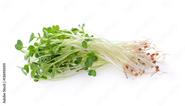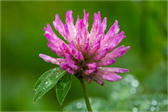1. Люцерна имеет стержневую корневую систему, которая проникает на большую глубину.
2. Люцерна должна скашиваться в правильное время.
3. Люцерну используют для различных целей.
4. Люцерна – это многолетнее растение и оно хорошо развивается при большом разнообразии климатических условий.
5. Известкование необходимо, если почва кислая.
6. Почти все почвы подходят для выращивания люцерны, за исключением слишком кислых.
7. Время посева зависит от района.
9. Люцерна часто высевается с сопутствующей культурой.
10. Большое количество люцерны идёт на сено.
11. Определяя время скашивания люцерны на сено, необходимо принимать во внимание: урожай, качество сена и влияние скашивания на травостой.
12. Скосив сено рано, мы получим облиственное сено с высоким содержанием протеина.
13. Будучи хорошей покровной культурой, люцерна часто увеличивает урожайность последующей культуры.
14. Люцерна хорошо растёт при широком разнообразии климатических условий, но сухой жаркий климат особенно благоприятен.
15. Люцерна очень чувствительна к кислым почвам и она лучше реагирует на известкование, чем другие бобовые.
16. Никакие другие фуражные культуры не используются так разнообразно, как люцерна.
17.
 |
Люцерна является засухоустойчивым растением благодаря тому, что её стержневой корень и даже боковые корни проникают на большую глубину.
Comprehension activities
4. Answer the following questions to text A.
1. What does liming result in?
2. Does alfalfa have a fibrous root system?
4. How is alfalfa used?
5. When should alfalfa be cut for hay?
6. Under what conditions is alfalfa seeded in early spring?
7. Why shouldn't alfalfa be cut too early?
8. What climatic conditions are best for alfalfa growth?
9. Why are deep soils so important for alfalfa?
10. What seedbed does alfalfa need?
11. Can alfalfa be 50 inches high?
5. Read text B without a dictionary. Identify the meaning of the words in bold according to their Russian equivalents and to the context. Title the text.
Text В
Red clover is the most widely grown and the most important of the true clovers. Its widespread use is due to the following: it produces a high yield of good quality hay; it is an excellent source of pasturage; it fits (подходит) into most rotations well; it is valuable for soil improvement.
 |
This legume is best adapted to fertile, well-drained silt and clay loam types of soil that are relatively high in the content of organic matter. It does best when moisture is abundant, and rather poorly on soils with a low water-holding capacity. In some years it may be injured but winterkilling when grown on poorly drained soils.
Although red clover does best in a cool, moist climate, it is not injured to any considerable extent by hot weather, provided sufficient moisture is available. It tolerates soil acidity better than alfalfa, but grows better on properly limed soils. In addition to lime, this soil should contain sufficient amounts of available phosphorus and potassium to support a good growth of red clover. Generally, red clover is easier to grow than alfalfa.
Because of its biennial habit, red clover is mainly used in short rotations. An example of a common 3-year rotation is the one that includes corn or some other cultivated crop, small grain and red clover or red clover plus timothy. Red clover is beneficial to corn in such a rotation, as it adds considerable organic matter and nitrogen to the soil.
6. Specify the sentences corresponding to text B .








